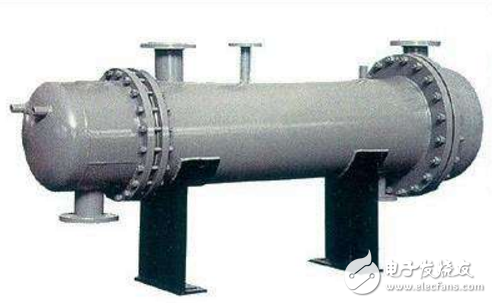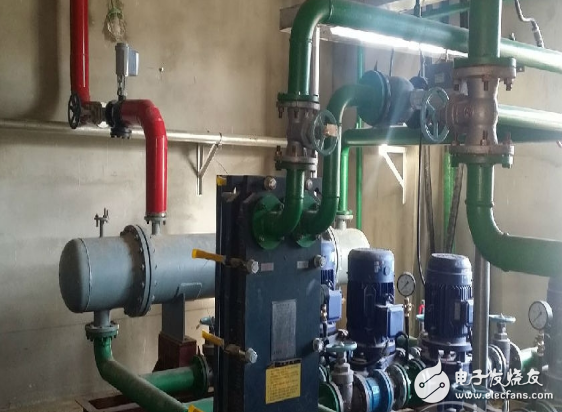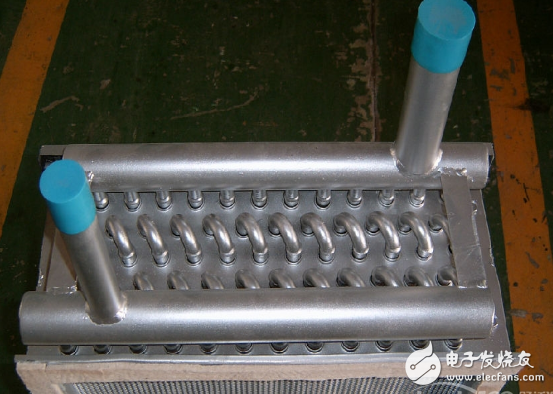The steam heat exchanger is a highly efficient device that can fully utilize the heat from steam to warm up air. This heated air can then be concentrated and directed to various drying and heating equipment. In modern industrial applications, steam has become an ideal and versatile heat carrier due to its efficiency and wide range of uses.
**First, the structure of the steam heat exchanger**
The core component of the steam heat exchanger is the steel-aluminum composite finned tube. Thanks to advanced manufacturing techniques, the thermal resistance between the materials is minimized, ensuring a more efficient heat transfer process. The steel pipe provides structural strength and pressure resistance, while the aluminum fins enhance thermal conductivity. This combination not only improves heat transfer performance but also prevents direct contact between the steel and air, reducing corrosion risks. Additionally, the smooth surface of the fins minimizes air resistance compared to traditional wound types. The design is compact, offers a large heat transfer area, and is easy to clean, making it a practical choice for many industrial applications.

The steam heat exchanger is essentially a tube-and-fin type device designed to maximize heat transfer efficiency. Its compact structure allows for high utilization of space, making it ideal for environments where space is limited.
**Second, the working principle of the steam heat exchanger**
The steam enters the core at high speed and is directed toward the small holes along the side walls. This kinetic energy helps push water to flow in a tangential direction, creating a swirling motion as it contacts the inner walls of the casing. The design of the housing ensures stable and consistent water rotation, which enhances heat absorption and reduces noise. As the steam is dispersed into tiny droplets, the resulting noise is significantly reduced—typically around 50 dB.
This rotating water flow moves along the casing wall under centrifugal force and exits through the upper and lower plates. The angular movement of the hot water promotes even temperature distribution within the tank. A negative pressure is created inside the casing after the hot water exits, drawing in cold water from outside. This continuous cycle efficiently heats the water, achieving the desired temperature with minimal energy loss.

**Fourth, the main advantages of steam heat exchanger**
1. **High Efficiency and Energy Saving**: With a thermal efficiency of up to 99%, the steam heat exchanger dissolves steam directly into the water, even with a low pressure difference (as low as 0.04 MPa), minimizing heat loss and maximizing energy use.
2. **High Hot Water Temperature**: It can produce hot water up to 98°C in open containers or 150°C in pressurized vessels, with a maximum operating pressure of 1.6 MPa.
3. **Low Vibration and Noise**: The design incorporates internal noise-reduction features, keeping noise levels below 50 dB and significantly reducing vibration, improving the surrounding environment.
4. **Low Investment Cost**: By directly introducing steam into the water tank, it eliminates the need for additional pumps and piping, reducing overall investment.
5. **Easy Operation and Maintenance**: Water and steam are controlled separately, allowing for repeated heating and precise temperature control.
6. **Long Service Life**: Made entirely of stainless steel, it requires no disassembly for maintenance and offers a long lifespan.
**5. Installation and Use Instructions for the Steam Heat Exchanger**
1. The steam heat exchanger should be connected via standard flanges and installed in the geometric center of the tank, ideally 200 mm above the bottom and 200 mm away from the sides.
2. Ensure the steam pipe is securely fastened and aligned without any swinging. When multiple units are used in parallel, they should be evenly distributed.
3. If the steam pipe contains debris, install a filter to prevent nozzle clogging.
4. It is recommended to use a YWQ-type temperature and level controller for optimal water temperature and level management.
5. The pipeline diameter should be equal to or larger than the nominal size of the heat exchanger. For multiple units, the total cross-sectional area of the steam line must match the combined area of all connecting pipes.
6. A check valve must be installed near the heater to prevent water backflow when the steam is turned off.
Nordy Dry specializes in producing steam heat exchangers and radiators. Our factory is equipped with strong technical capabilities, advanced production equipment, and rigorous testing procedures. We focus on manufacturing steam heaters, tube condensers, mixers, and dryers, among other products. Over the years, we have adhered to the philosophy of "customer satisfaction is our goal" and "quality first, reasonable price, prompt delivery, and excellent service." Our commitment to research and development in chemical, food, biological, and pharmaceutical industries has earned us a strong reputation in the market.
**6. What are the Direct Heat Exchange Systems for Steam Heat Exchangers?**
Steam heat exchangers use several direct heat exchange systems, including:
1. **Steam Heated Ejector System**: This system operates under pressure, is simple in design, cost-effective, and has a high heat utilization rate with minimal scaling issues.
2. **Steam Mixer**: Although effective, this system may cause damage in certain applications such as heating and air conditioning, so it's less commonly used.
3. **Spray Heat Exchanger**: Ideal for low-pressure steam conditions, but the spray nozzles can become clogged by debris in the water, requiring regular maintenance.
4. **Thermal Sensing Heat Exchanger Unit**: This system offers stable operation, automation capabilities, and ease of use, making it a popular choice in many industrial settings.

Rental series
Rental Generators
Rental generators are portable power sources that can be hired or rented for temporary use. They are commonly used in situations where there is a temporary need for electricity, such as during construction projects, outdoor events, or power outages.
Rental generators come in various sizes and power capacities to meet different needs. They are typically fueled by diesel, natural gas, or propane, and can provide electricity to power equipment, appliances, or even entire buildings.
The rental process usually involves contacting a generator rental company and specifying your power requirements. The company will then recommend a suitable generator and provide delivery, setup, and maintenance services. Rental generators are typically rented on a short-term basis, ranging from a few hours to several weeks or months, depending on the customer's needs.
Renting a generator can be a cost-effective solution compared to purchasing one, especially for one-time or infrequent power needs. It also allows for flexibility, as the generator can be easily returned or exchanged if the power requirements change.
When renting a generator, it is important to consider factors such as power capacity, fuel efficiency, noise levels, and any additional accessories or services required. It is also crucial to follow proper safety guidelines and ensure that the generator is used and maintained correctly to prevent accidents or damage.
Rental Series,1800Rpm Diesel Generator Sets,Diesel Generator Set 60 Hz,Diesel Generator Set 91Kw
Grandwatt Electric Corp. , https://www.grandwattelectric.com